Giant screens, spartan interiors: Electric vehicles go high tech
EVs are truly transforming how Americans drive.
Electric vehicles are transforming how Americans "refuel." There are changes happening inside the cabin, too. No more start/stop buttons. Radio dials now programmed into massive tablets that are mounted to the center dash. Simple functions like heated seats and climate control operated via an oversized screen.
Automakers are making EVs incredibly austere and geared toward motorists who are accustomed to doing just about everything on their mobile phones.
"A lot of it is playing 'follow the leader,'" explained Ed Kim, vice president at AutoPacific. "Tesla's Model S established the idea that a premium EV has a giant screen. There can be a strong tendency to emulate your benchmark. Right now Tesla is the benchmark."
Teslas attract buyers who are "tech savvy and have a high level comfort with technology," Kim said. Legacy and mainstream automakers, desperate to steal sales from Tesla, are mimicking the giant tablet-like screens and unembellished interiors found in every Tesla vehicle.
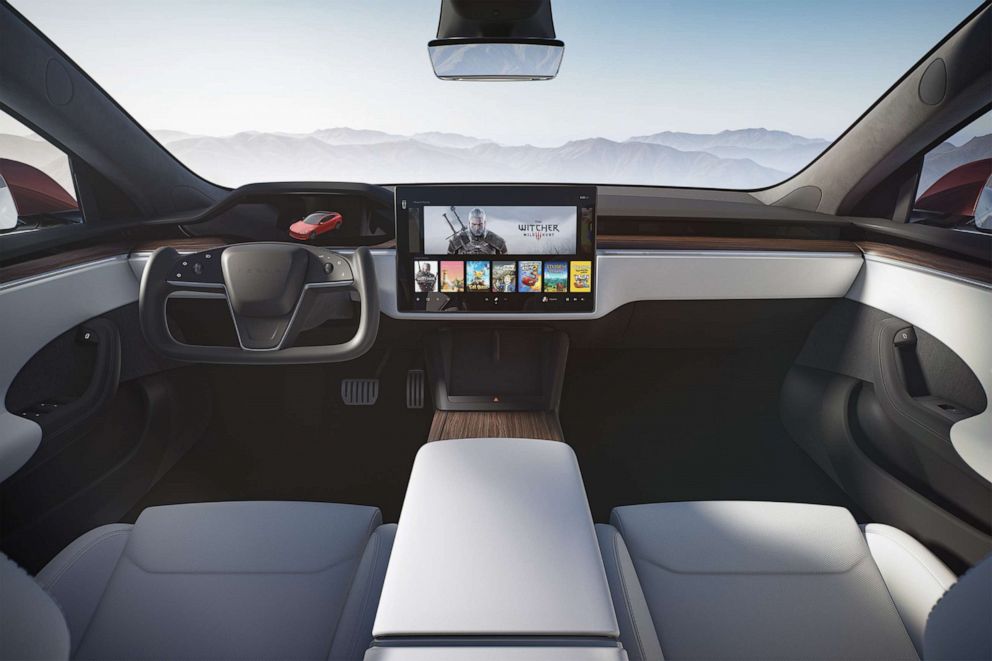
These ultramodern and experimental interiors have their drawbacks -- and detractors. Karl Brauer, executive analyst at iSeeCars.com, said large screens can be very distracting. They could also malfunction.
"The thinking is the computer is smarter than you. Without fail, I've come across a situation that the computer didn't know what to do," he told ABC News. "And if the screen goes down, everything doesn't work."
Dustin Krause, director of e-Mobility North America for Volkswagen, argued that futuristic technology should not deter American drivers, many of whom are still wary and unsure about EVs, from buying one. In Volkswagen's ID.4 crossover, a screen is not required to switch songs or turn on the ventilated seats.
"You just have to say 'Hello ID' to activate the voice assistant," Krause told ABC News. "Asking a car to do functions isn't so unusual -- consumers use [Apple's] Siri and [Amazon's] Alexa. It becomes second nature to most ID.4 drivers."
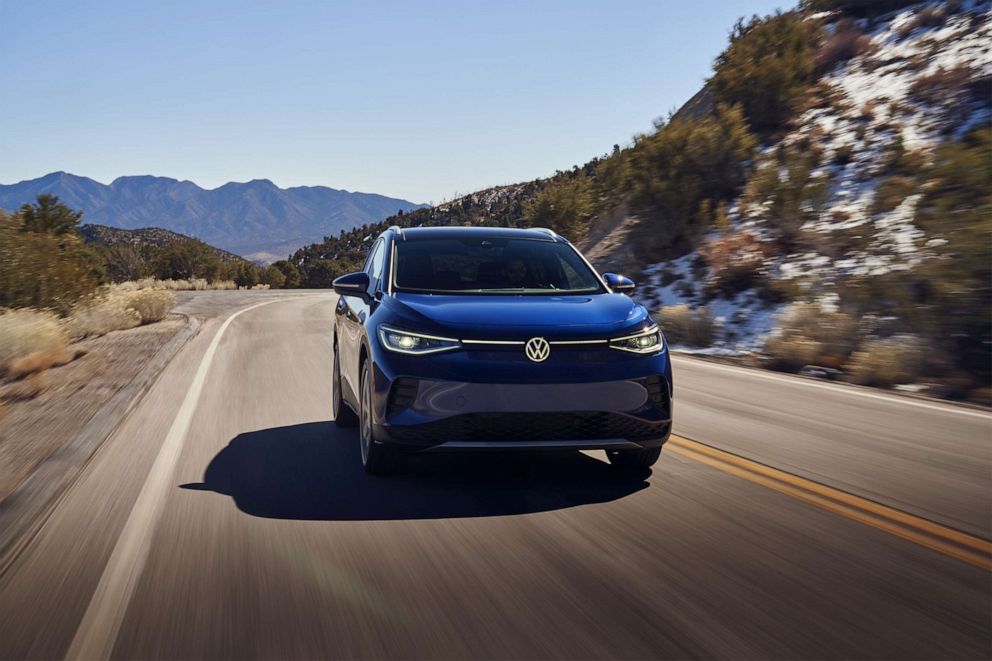
He and a few engineers even tried to trick the system by saying "My butt is cold" instead of "Turn on the heated seats." The car was able to get the job done. The only command that's not possible? Rolling down the windows. Though that, too, could change in the near future.
ID.4's engineers decided against a humongous screen. But they converted the gear shifter to a twist knob and eliminated the start/stop button. Krause said the goal was to create a "simple and intuitive cockpit" and an "uncluttered center console."
"Just press on the brake pedal when you sit in and the car will start up," he said. "Select park and when you exit the vehicle the ID.4 will shut off."
He added, "We're trying to make the transition to an EV easy."
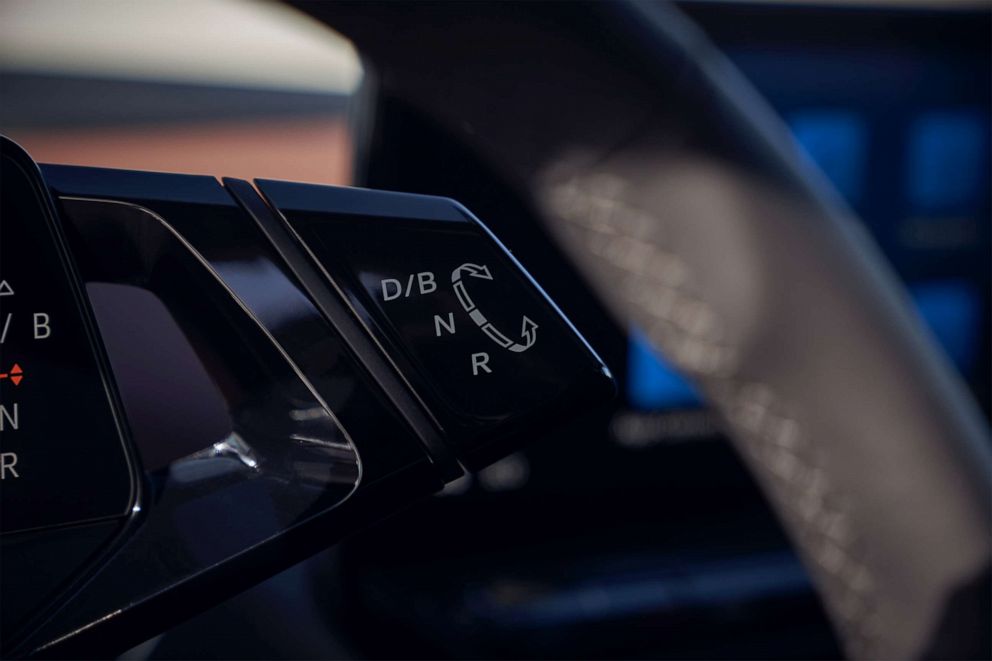
Ford went to great lengths to solicit customer feedback when designing the slinky Mustang Mach-E SUV. It set up studios in the U.K., China and Michigan, inviting locals to sit in and rearrange a mock interior of the electric SUV that was made of Styrofoam. Designers watched from the sidelines and took notes, tweaking their sketches based on how participants reacted to the cabin.
"With this BEV [battery electric vehicle] platform, we got this opportunity to reimagine and reconfigure the space," Josh Greiner, senior interior designer of the Mustang Mach-E, told ABC News. "We were able to design exactly what we wanted and let the chassis kind of follow."
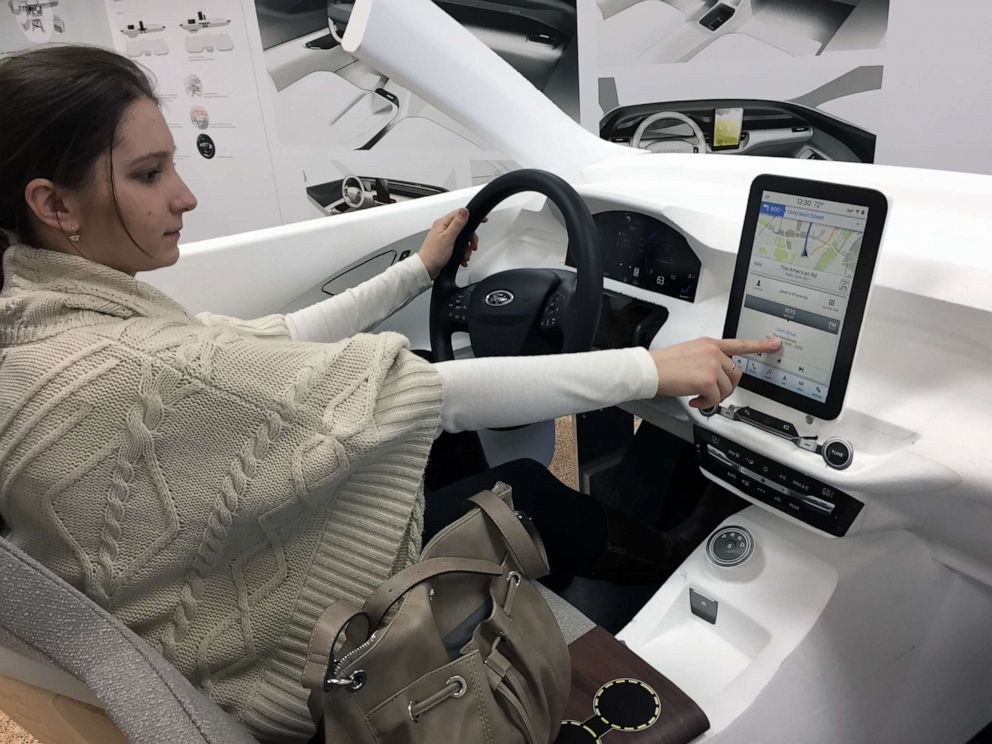
The Mach-E features one of the largest screens in the EV segment -- 15.5 inches -- and many of the controls, including drive modes, are only accessible via the screen. The interior is also simplistic and sparse, which was intentional. Greiner referred to it as a "calm and serene environment."
"Everything on the Mach-E is digital, even the door handles," he said. "We didn't want levers and switches cluttering the interior."
Ford's best-selling cars and trucks, like the F-150, are largely immune to the trend, Greiner said, adding, "You're more progressive about tech if you buy a BEV. This is for a very specific customer."
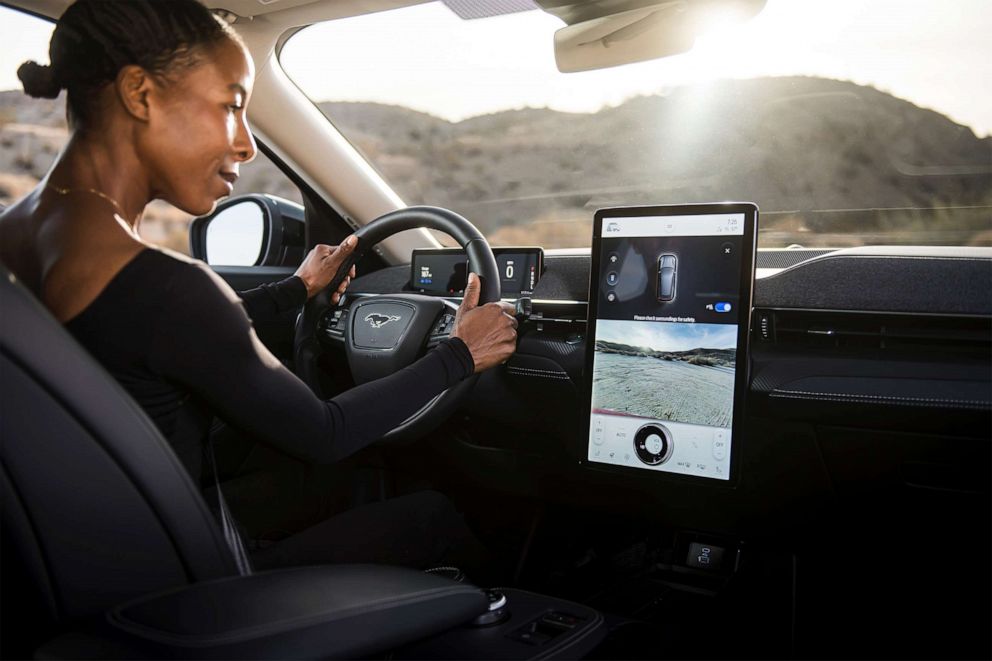
The team behind BMW's upcoming iX Sports Activity Vehicle went for a dramatic interior, taking inspiration from modern architecture.
"We wanted to create something like a loft on wheels," said Adrian Van Hooydonk, BMW Group's design director. "A cozy seating arrangement, a large flat screen and not much more to be honest."
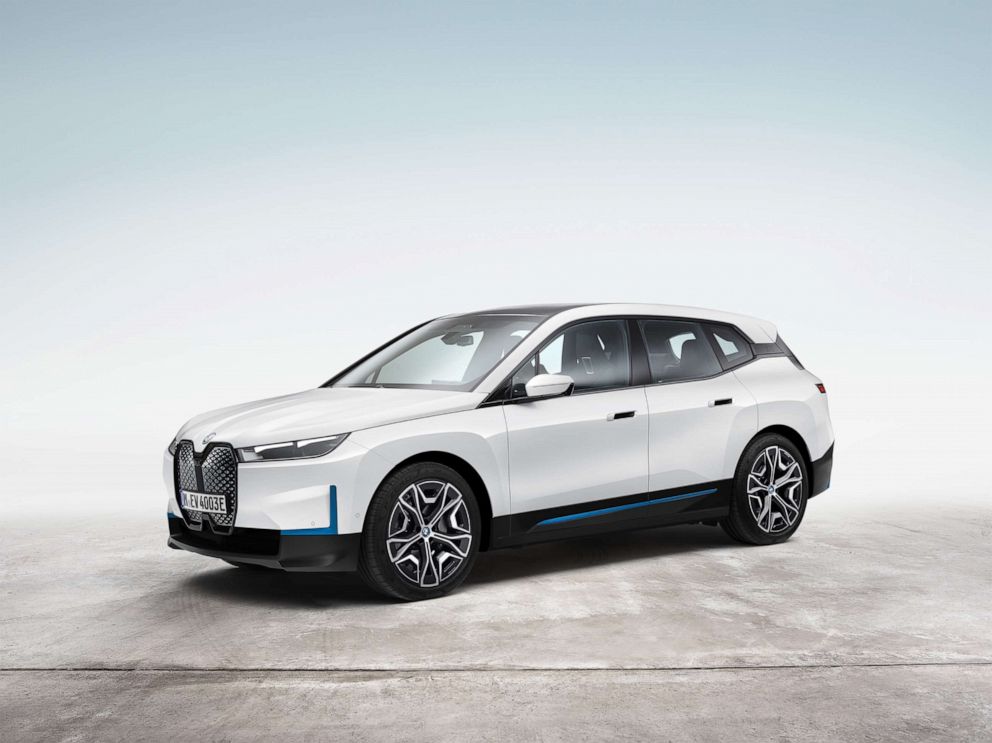
The vehicle was designed "from the inside out" and the hidden speakers, slim instrument panel, lack of buttons and panoramic glass roof give the cabin an airy, spacious vibe.
"We're not switchless but we definitely have a lot less switches," Van Hooydonk said. "We've been able to reduce elements by combining them."

The all-electric Kia EV6 crossover, which goes on sale in the second half of 2021, comes with a high-tech curved infotainment screen and seats made from recycled plastics.
Designing an "inspiring space" was the "most important thing for us," said Jochen Paesen, Kia's vice president for interior design. "We believe EV6 can inspire customers by boosting their creativity."
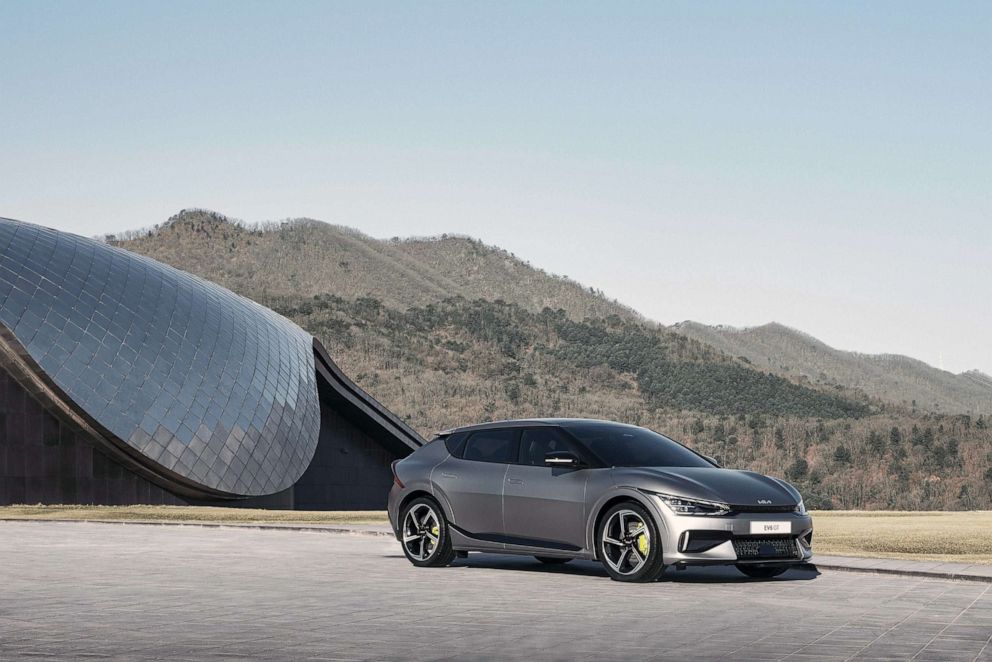
A vertical, 11.15-inch screen replaces nearly all of the switches, buttons and knobs in the Polestar 2. Like the ID.4, the electric sedan has no dedicated start/stop button and navigation, entertainment and climate control are all handled on the screen. Polestar 2's inclusion of Google’s native infotainment system, an industry first, separates itself from the pack. The avant-garde, minimalist interior is a traditional Scandinavian design.
"The car is now part of your connected life -- if you want it to be," Polestar Chief Operating Officer Jonathan Goodman told ABC News.
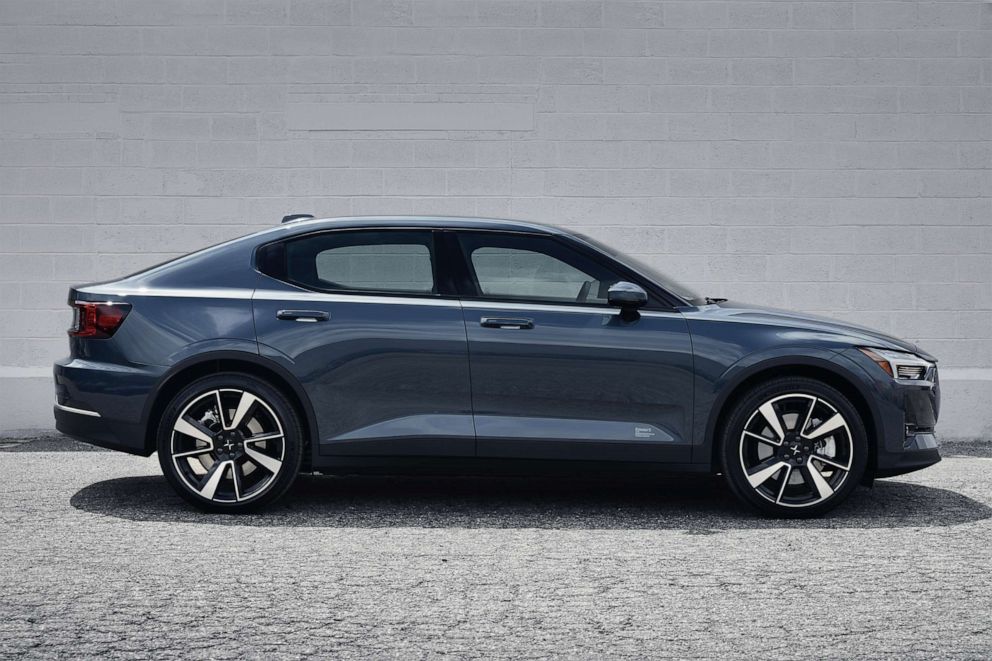
The average screen size in vehicles is now 8 inches, according to AutoPacific research. Kim said consumers generally want more screen real estate, not less.
"There are functional benefits to having larger screens: Bigger fonts that are easier to read and less squinting. Larger screens do not necessary mean more distractions," he said.
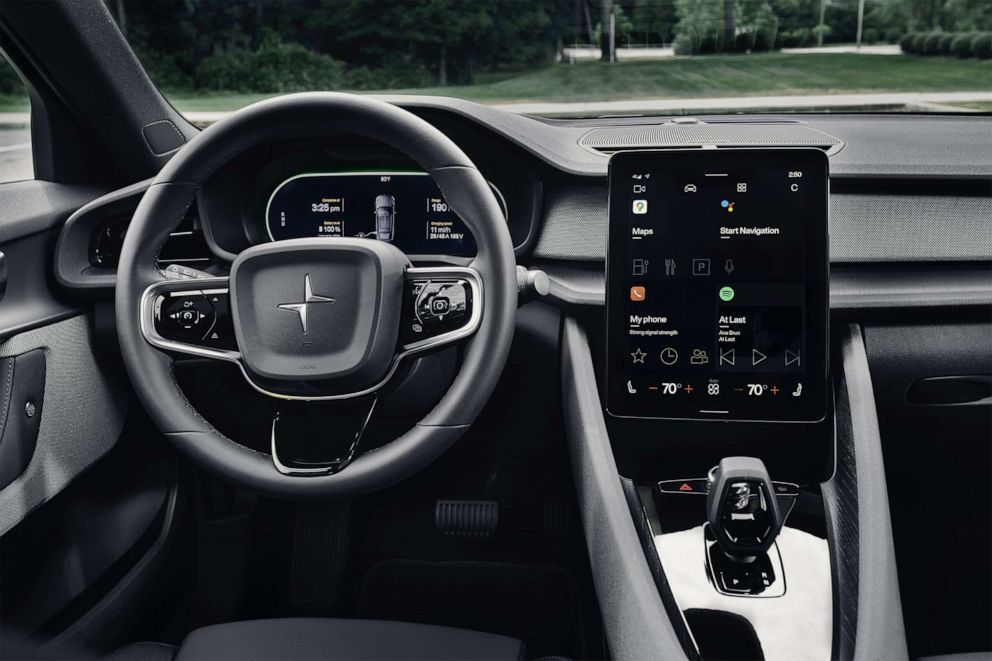
There are limitations of the technology, even for Kim. He gave the examples of Tesla's Model 3 windshield wipers being controlled through the screen and the digital gear shifter on the Model S.
These redesigns "may be out of the comfort zone for a mainstream consumer," Kim acknowledged. "A difficult interface can absolutely turn off buyers, especially older ones."
Brauer suggested that automakers are doing away with traditional buttons to reduce costs.
"It's a lot cheaper to engineer a digital user interface than it is to produce multiple hard controls involving dials and springs and buttons," he said.
When Mercedes-Benz officially unveils its much-hyped all-electric EQS sedan on April 15, consumers may be in for a shock.
The sci-fi interior is the most extreme of any EV on the market. A curved, 56-inch wide "Hyperscreen" consisting of three separate displays cocoons the interior. Scratch-resistant aluminum silicate protects the display and the screen's advanced molding process reduces glare and distortion across the entire width of the vehicle, according to the company.

Gorden Wagener, chief design officer at Mercedes-Benz, said he first saw renderings of a 3D screen five years ago and "loved it."
"I had to make it happen," he told ABC News. "The car is super futuristic and revolutionary. As a designer, I am always aiming for reduction."
The start/stop button is the sole physical switch in the entire vehicle. The screen allows access to all functions but drivers can also depend on the A.I. voice assistant. Wagener admitted that voice commands will likely make even screens obsolete one day.
"The EQS is the first of its kind -- years ahead of anything else you can buy out there," he said. "We have entirely reinvented the car."




